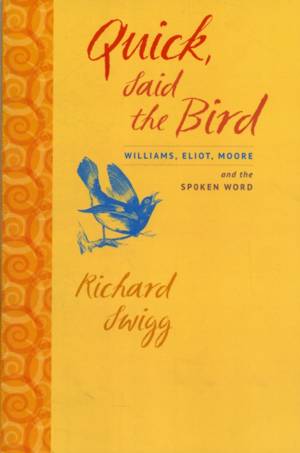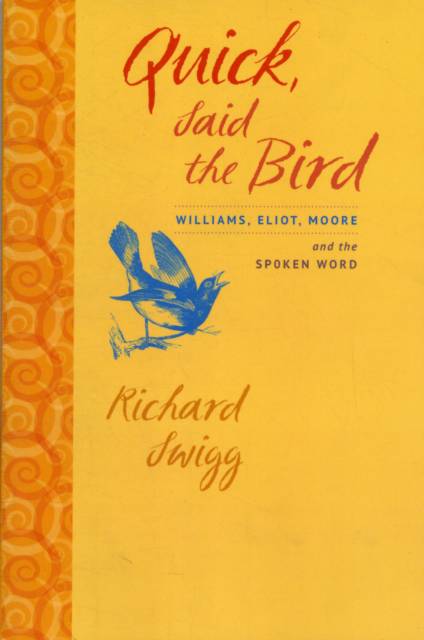
- Afhalen na 1 uur in een winkel met voorraad
- Gratis thuislevering in België vanaf € 30
- Ruim aanbod met 7 miljoen producten
- Afhalen na 1 uur in een winkel met voorraad
- Gratis thuislevering in België vanaf € 30
- Ruim aanbod met 7 miljoen producten
Zoeken
€ 53,45
+ 106 punten
Omschrijving
When William Carlos Williams said, "It's all in / the sound," when T. S. Eliot hailed the invigorating force of the "auditory imagination," or when Marianne Moore applauded "the clatter and true sound" of Williams's verse, each poet invoked the dimension that bound them together. In Quick, Said the Bird, Richard Swigg makes the case for acoustics as the basis of the linkages, kinships, and inter-illuminations of a major twentieth-century literary relationship. Outsiders in their home terrain who nevertheless continued to reach back to their own American vocal identities, Williams, Eliot, and Moore embody a unique lineage that can be traced from their first significant works (1909-1918) to the 1960s. In reconstructing the auditory dimension in the work of the three poets, Quick, Said the Bird does not neglect the visual text. Whether in the form of Moore's quirky patternings, Eliot's expandable verse-frames, or Williams's springy stanzas, the printed shape on the page is here brought together with the spoken word in vital interplay: the eye-read text cut against by sequential utterance in a restoration of the poetry's full effect. By seeing and hearing the verse at the same moment--together with reading side-by-side discussions of the quarrels, friendships, mutual borrowings, and shared energies of Williams, Eliot, and Moore--the reader gains a remarkable new understanding of their individual achievements.By sound and sight, Quick, Said the Bird takes the reader straight into the physical textures of the finest works by three outstanding figures of twentieth-century American poetry.
Specificaties
Betrokkenen
- Auteur(s):
- Uitgeverij:
Inhoud
- Aantal bladzijden:
- 157
- Taal:
- Engels
Eigenschappen
- Productcode (EAN):
- 9781609380793
- Verschijningsdatum:
- 15/04/2012
- Uitvoering:
- Paperback
- Formaat:
- Trade paperback (VS)
- Afmetingen:
- 150 mm x 226 mm
- Gewicht:
- 299 g

Alleen bij Standaard Boekhandel
+ 106 punten op je klantenkaart van Standaard Boekhandel
Beoordelingen
We publiceren alleen reviews die voldoen aan de voorwaarden voor reviews. Bekijk onze voorwaarden voor reviews.











